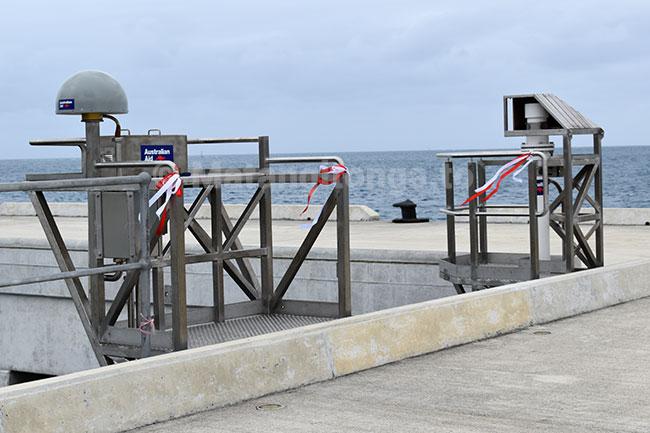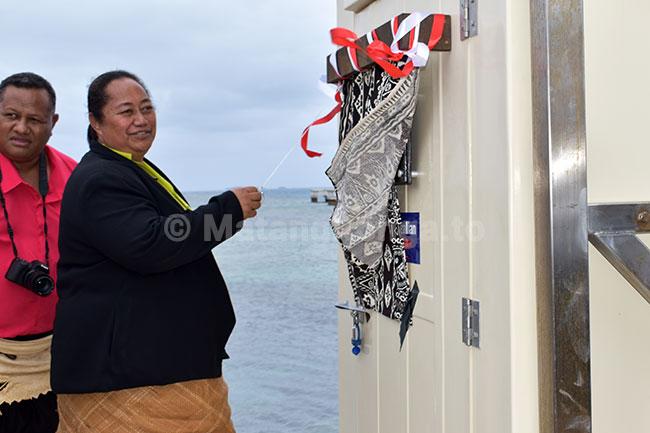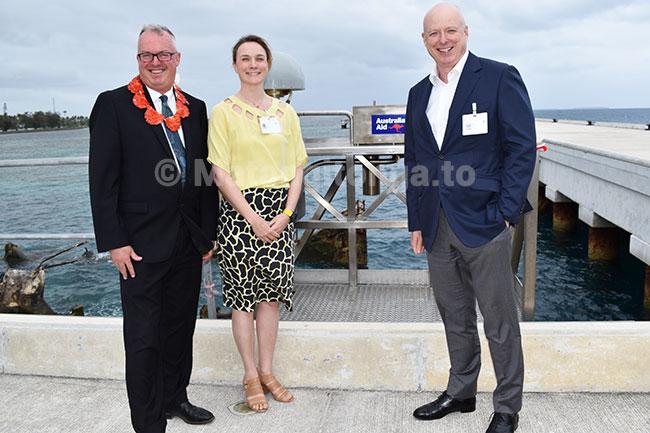
A new technologically advanced tide gauge station was unveiled on October 16 at Vuna Wharf during the 17th Session of the World Meteorological Organization (WMO) Regional Association 5 Meeting held this week in Nuku’alofa.
The Minister for Internal Affairs, Hon Losaline Ma’asi unveiled the station that was commissioned earlier by the Prime Minister Hon ‘Akilisi Pohiva during a separate ceremony, at the Tanoa Hotel.
The tide gauge station is one of 14 similar stations in the Australian-funded Pacific Sea Level and Geodetic Monitoring network in the Pacific that records tides, weather, and land movement.
Director of Tonga Met, 'Ofa Fa'anunu said the station is built to withstand cyclone conditions and should last at least 20 years with good maintenance.
He said this was not Tonga’s first sea level monitoring station, but a big improvement from the former station located at Queen Salote Wharf, both in terms of location and in monitoring technology.
The new station took four weeks to install with the equipment, shipping and installation costing around $1 million pa’anga.
He said the station features a traditional acoustic sensor used to monitor sea level around the world, as well as two radar sensors and a pressure sensor to simultaneously measure changes in water level.
Third in region
“Like the other new stations recently established in Niue and Tuvalu, it is the 3rd in the region with an on-site Global Navigational Satellite System. This allows us to monitor movement of the station itself, relative to sea level, should the wharf or land around it move significantly over time or following an earthquake.”
The system includes an in-built Automatic Weather Station, and is already providing real-time data on sea level, wind speed and direction, pressure, temperature and sea surface temperature via direct link to Fua’amotu Weather Forecasting Center located at the Airport.
In addition, data is also sent to the Bureau of Meteorology in Australia for quality assurance, and is available to the region through online tools such as the Real-Time Data Display and the Pacific Ocean Portal.
‘Ofa said it also contributes to the region’s tsunami monitoring network and is a component of our local tsunami protocol.
Meanwhile, Prime Minister Hon ‘Akilisi Pohiva highlighted the importance of the station to help prepare for natural disasters and hazards in the region with accurate local information.
“Resilience in the face of a changing climate is a consistent theme and a declared priority for all Pacific Island nations. This station is a concrete example of Tonga’s commitment to Pacific Resilience.”
Tonga Meteorological Service is actively building its marine and ocean services capacity and is currently deploying an array of tide gauges and wave buoys that will assist in gaining better understanding of tides and ocean dynamics around many of Tonga’s outer islands as well.
The station’s ongoing utilities, maintenance and calibration costs are supported by the Australian Government and the Pacific Community (SPC) though the Climate and Ocean Support Program in the Pacific (COSPPac).
In addition, support is also provided by the Bureau of Meteorology, Geoscience Australia, the Pacific Community, Tonga Meteorology Service, and the Ministry of Lands and Natural Resources.
The event was attended by the Secretary General of the WMO, Professor Petteri Taalas, representatives of the WMO and members of the WMO Regional Association 5, among other guests.







